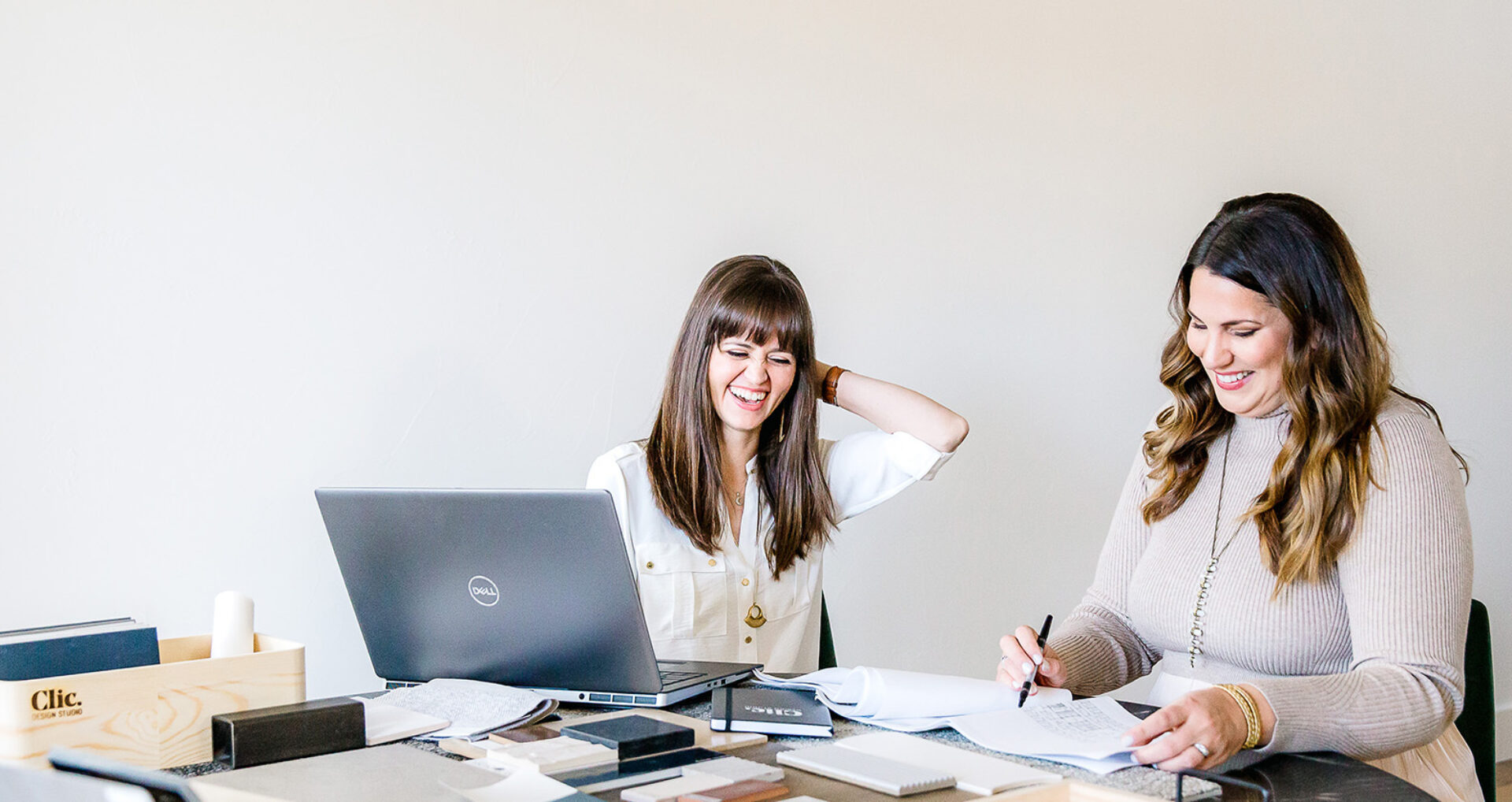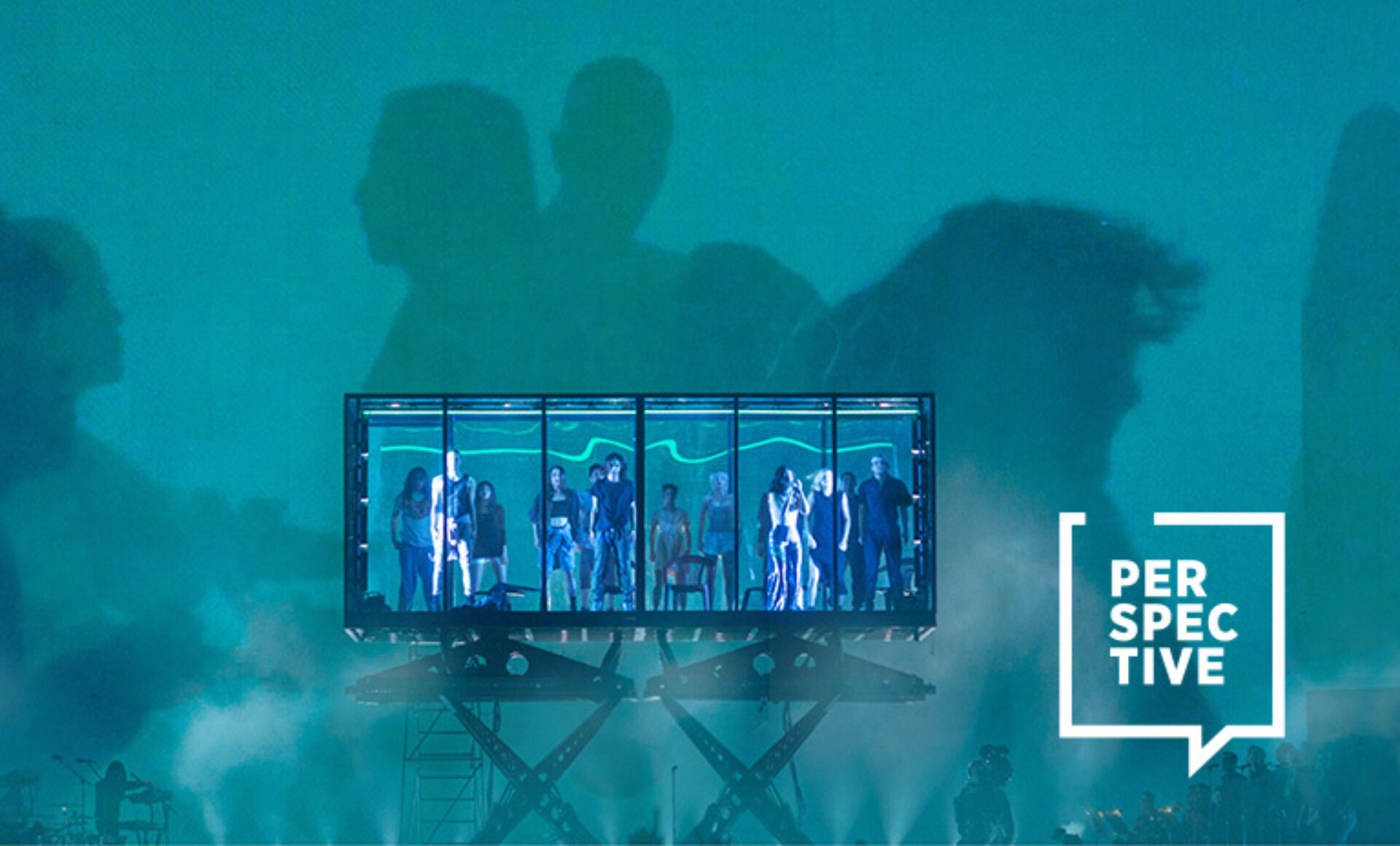At Clic Design Studio the client-designer relationship is central to the design process. In this conversation co-founders and principals Sarah McGarry, IIDA and Rene Stremel, IIDA discuss the major things to consider when leaving a larger firm to branch out on your own, and share practical advice for the next generations of female designers interested in starting their own companies—from taking risks to practical issues such as health insurance, taxes, liability, and more.
Rene Stremel: We started Clic Design Studio out of a desire to refocus on our passions and reengage in the details of design. Being in leadership roles within our previous firm gave us a solid foundation in all aspects of design and business, and provided us with experience on a wide variety of project types, scales, and complexity. We also had amazing mentors that we are immensely grateful for. Because of all that, Clic Design Studio is able to offer principal involvement in every aspect of our projects. We take pride in our work and our relationships and are personally invested in the success of our work.
Sarah McGarry: Many design firms are run with an arguably old model that is based off of tracking billable hours of each team member, which is tied to their utilization and project profitability. Designers are told they have X hours to complete a project (often pinched as tight as possible to be competitive with fees) and challenged when they take additional time. I have witnessed many unhappy and burned-out project managers, designers, and often shortchanged clients in the name of that.
At Clic Design Studio, we wanted to challenge that model. While we still do project planning, we have forgone time cards because we believe sometimes you need a few extra hours to let your mind wander to come up with the best possible solution or do one more iteration for things to work. We are not here to sell time—we are providing ideas, strategies, concepts, spaces, and connections.
We also believe principals should truly have involvement and bring their expertise from a project start to finish. We are invested in the outcome, not the number of hours it took us to get there. And we put design and our clients first with the belief that if we are executing at the highest level possible with passion, we will all win.
Finally, it’s important to mention that Clic is women owned and operated! Not only are we entrepreneurs, but we are also moms (in fact our kids' initials makeup our name), so we know firsthand and understand the juggle of careers and lives outside of the office. Therefore, we put emphasis on prioritizing the balance of work and life and wellness in our practice.

RS: I think Sarah and I compliment each other very well. She is very strong in business development and marketing, while I tend to gravitate towards and enjoy the business side of things, like spreadsheets, project tracking and invoicing. Together, we are extremely passionate about design, client relationships, and doing good work. We have similar drive and vision and have worked alongside each other for more than 15 years so we knew we loved working together!
SM: We are a great yin and yang! We “came to the table” with similar values, ethics and integrity that served as a catalyst and foundation for launching our business and future goals.
RS: And we are both passionate about great design and creating spaces that our clients are excited about and proud of. Within that though, I would say that Sarah tends to be the dreamer—always interested in how far we can push the boundaries. We have a really great balance. To have an effective co-founder relationship it’s important to establish your ‘lanes’ early on: you have to be realistic about each other’s strengths and weaknesses and be willing to allow one another to ‘own’ their respective responsibilities.
SM: When starting out you have to wear a lot of hats, so it is critical to have strengths in opposite areas so you can divide and conquer.
RS: Some of the major things to consider when leaving a larger firm to branch out on your own? You have to be willing to do the ‘dirty work’ and be extremely hands-on with every aspect of the business—from insurance, to contracts, to marketing. No longer having the in-house departments for everything makes business ownership both exciting and challenging!When starting out you have to wear a lot of hats, so it is critical to have strengths in opposite areas so you can divide and conquer.
RS: Some of the major things to consider when leaving a larger firm to branch out on your own? You have to be willing to do the ‘dirty work’ and be extremely hands-on with every aspect of the business—from insurance, to contracts, to marketing. No longer having the in-house departments for everything makes business ownership both exciting and challenging!
SM: You are going to have to figure out things like insurance, 401K, etc. I advise reaching out to a few other business owners that you trust to get references for who they have hired to help them manage those things (ie: accountant, lawyer). Hire experts and use those people to help answer all your questions and steer you in the right direction.
When working in a large firm you have the built-in overhead of people doing research, putting together marketing collateral, managing your website/social media, etc. So, you need to be excited about taking on those tasks—and willing to do it all. You have to have grit!
Most important, in my opinion, is you need to think about how well networked you are and how you plan to market and bring in work. Are you confident you can bring in work to maintain the pay/salary you want?
RS: As far as challenges go, I would say learning the ins and outs of insurance as well as creating all of our marketing material, forms, processes from scratch. There is a lot of time spent in the initial stages of a business getting all of your ‘templates’ together.

SM: Right out of the gate, we had to overcome bandwidth concerns when pursuing new work. We had to work hard to help potential clients overcome the nervousness that comes with collaborating with a small team. That said, never underestimate looking people in the eye and giving them your word, being honest and transparent on your back-up and growth plans, and having good references. Those things can squash any concerns and win work. Trust me.
RS: When communicating our design sensibility, we strive to showcase the variety of aesthetic range of our projects, that no two organizations are alike, and thus design solutions are not and should not be formulaic across projects.
SM: I’d say finding the right interior design partner is not unlike finding the right partner for anything else in life. Beyond the creative credentials, clients want to feel like their design partner gets them—that they understand what they want and share their goals; that they are someone they can trust to come through for them. You want to feel like you ‘clic’. That’s the kind of partner we aim to be.
RS: I hope Clic Design Studio becomes known for our partnership-focused approach to projects, while also bringing a healthy challenging mentality to make each project the best it can be.
SM: Our work is as much about leaving the world a better place as it is about doing great design. We believe we are part of something bigger than ourselves. I take pride in knowing that meaningful design decisions can affect both our clients and community in a positive way.
RS: As for looking into the future, I would love to see Clic Design Studio as an 8–10-person firm in five years, making an impact on the Denver design community through thoughtful, innovative, and impactful work.
SM: Agreed! And I’ll add on, that I hope we are sought out as a top place to work for those passionate about design, and we are viewed as a leading design firm in Colorado.







